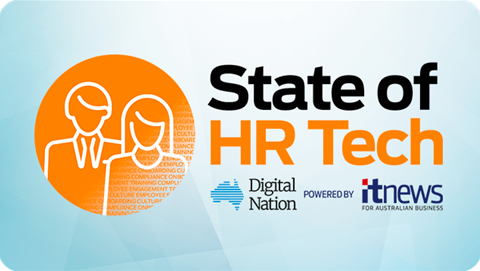As Australian organisations accelerate digital transformation and AI reshapes the fabric of enterprise operations, Australia faces a pivotal moment in its cyber maturity. Identity security is a critical vulnerability - one whose scale and impact are far greater than many realise, and can no longer be ignored.

New findings from the CyberArk 2025 Identity Security Landscape report highlights a dangerous gap between business priorities and cybersecurity investment, with 75% of Australian organisations admitting they still prioritise operational efficiency over securing their digital environment—even as identity-related breaches continue to rise. It’s a disconnect that threatens more than just reputation. It puts business continuity, regulatory compliance and long-term resilience at stake.
Today’s threat landscape is defined by complexity. AI adoption, multi-cloud environments and automation are fuelling an explosion in machine identities—credentials that allow applications, APIs and bots to operate. Left unmanaged, they represent one of the most powerful and unguarded entry points for attackers.
To address this escalating risk, organisations must reframe identity security as a strategic business imperative rather than a technical afterthought.
The Modern Enterprise is Run by Machines—But Secured Like it’s 2015
Australian organisations now manage 79 machine identities for every human one. These include TLS certificates, IoT devices, cloud workloads and more - many with privilege access to critical systems. Yet most security strategies are still focused on protecting human identities, overlooking the rapidly expanding machine layer that is now underpinning operations.
This oversight is not just technical—it’s structural. Nearly half of Australian organisations report identity sprawl caused by siloed tools and fragmented systems, making it nearly impossible to get a unified view of who - or what - has access to sensitive data. And while 93% face mounting pressure from cyber insurers to strengthen privileged access controls, many are still relying on legacy infrastructure and manual processes not built for this scale.
The result? In the past year alone, 35% of local organisations experienced identity-related breaches, including phishing, deepfakes, and compromised credentials. In an era where fast and proactive action is essential, these blind spots slow down detection and recovery, leaving businesses exposed.
Certificates: A Silent Source of Business Disruption
One of the most overlooked identity risks today is certificate management. Certificates are the foundation of secure digital communication, yet they’re often treated as a back-end concern. That needs to change.
As cloud adoption accelerates, the number of TLS certificates has ballooned. Recent certificate authority disruptions have already forced widespread renewals, and compliance pressures are mounting. By 2027, Google will require certificate renewals every 90 days, and Apple every 45—down from the traditional one-year cycle. Manual tracking methods simply won’t keep pace, and outages caused by expired certificates are already leading to lost revenue and broken customer trust.
Security leaders now face a dual imperative to drive operational efficiency while reducing risk. Automating certificate lifecycle management and modernising outdated public key infrastructure (PKI) is no longer optional—it’s foundational to maintaining compliance, business continuity, reputation and resilience at scale.
From Compliance to Competitive Advantage
There is growing recognition that strong compliance practices can deliver more than risk mitigation—they can become a strategic advantage. 68% of Australian organisations believe that implementing a tailored compliance framework focused on business-critical assets would support self-regulation and improve alignment with Australia’s evolving cybersecurity regulations—especially those targeting critical infrastructure.
As GenAI and LLMs become embedded in business operations, identity security must be promoted to a board-level discussion. Organisations need clear, unified visibility into all identities—human and machine—and clear governance over who or what has privilege access to critical assets.
To truly unlock the benefits of GenAI while maintaining resilience and compliance, organisations must evolve their definition of privileged access and adopt integrated identity security strategies that protect the entire organisation.
The Bottom Line
Identity security isn’t optional in 2025—it’s a business continuity issue. It's the difference between resilience and disruption, between sustained growth and regulatory setbacks.
As GenAI, automation and cloud continue to reshape how organisations operate, boards and business leaders must ask: Are we protecting the very systems that keep our business running?
If the answer is uncertain, now is the time to act and prioritise identity security.


_(22).jpg&h=140&w=231&c=1&s=0)

.png&h=140&w=231&c=1&s=0)






 iTnews Executive Retreat - Security Leaders Edition
iTnews Executive Retreat - Security Leaders Edition












_(1).jpg&h=140&w=231&c=1&s=0)



